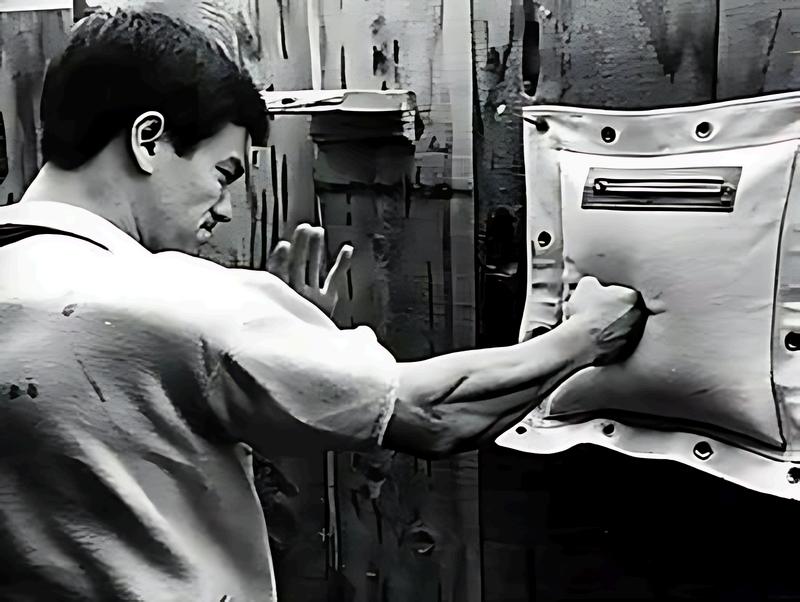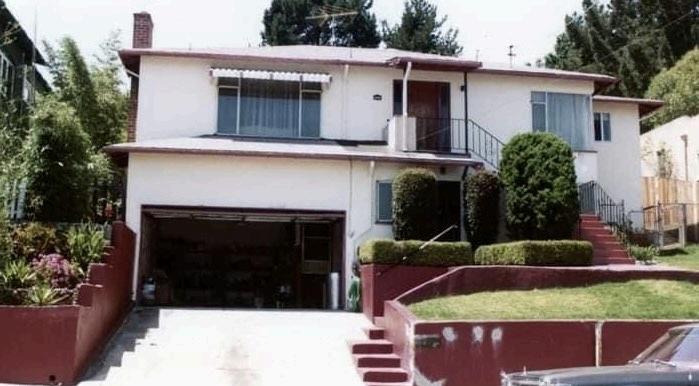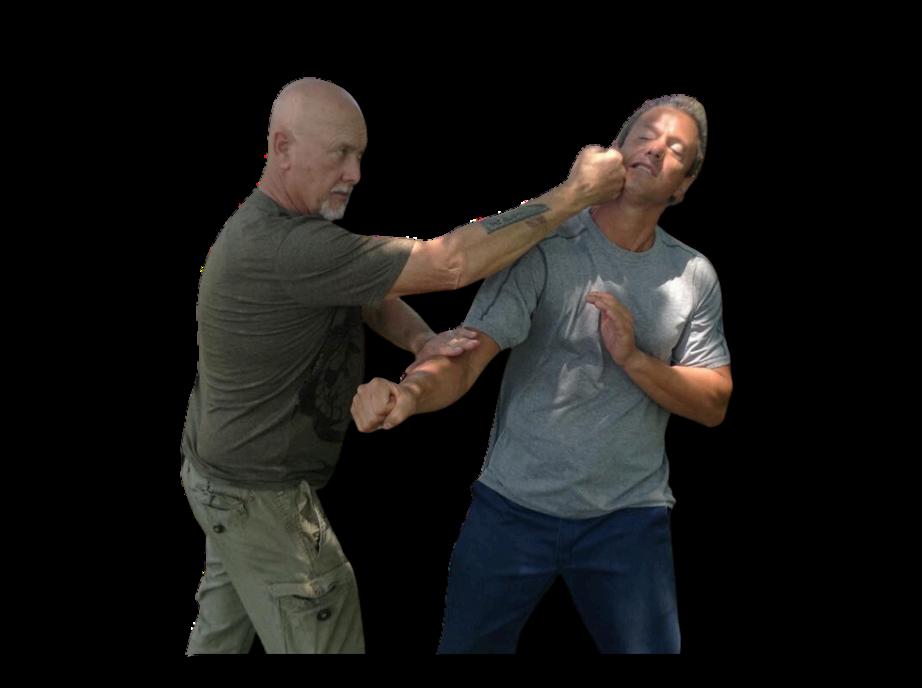
8 minute read
The Old WAY JKD GARY DILL
A brief history……… Bruce Lee was sent to the US from Hong Kong when he was 17. He attended Seattle High School and later the university. While in Seattle, he taught Wi fu classes, with some of his students being Taky Kimura, Jesse Glover, James Demille, and others. While in Seattle he had the opportunity to test his WC fighting skills against challenges by various karate practitioners, which were very successful.
James Yimm Lee was a well-known and respected Sil Lum kung fu and iron palm master from Oakland, California He heard of Bruce Lee’s skill and decided to travel to Seattle and meet him. Even though James was twenty years older than Bruce, they developed a close relationship and James decided to train with Bruce in his system of gung fu.
In 1964 when Bruce married Linda Caldwell, they flew to Oakland on the same day, and moved in with James and his family This gave them an opportunity to train on a daily basis and they subsequently opened up a small storefront school in Oakland.
One evening they were visited by Wong Jack Man, a representative of Bay Area kung fu instructors. He told Bruce that the Chinese elders were unhappy that he was training gung fu to Non-Chinese students and they demanded that he ceased immediately, and that if he refused Man would return and Bruce would be formally challenged to a fight. Bruce made it very clear that he would teach whom he wanted and said, “Let’s just fight now, why wait.” James locked the front door until the fight was over.
The fight was witnessed by James and a very pregnant Linda. The confrontation lasted a few minutes with Bruce Lee winning and Man left never to return. Bruce showed James how much his knuckles were bruised because of hitting Man so many times as he was running away from Bruce. But Lee was upset because he felt that he should have finished the fight sooner This is a major event in the future development of Jeet Kune Do.
Immediately Bruce decided to make his own fighting system that wasn’t so traditional and classical as Wing Chun.
From then on, Bruce and James spent almost every night in James’ garage (now their Oakland school) working out and experimenting with new fighting techniques and strategies. Bruce modified many Wing Chun techniques and streamlined them to be more compatible with street fighting He also added western boxing and some of the skills he had from fencing while he lived in Hong Kong.
Professor Wally Jay, the grandmaster of Small Circle Jujitsu, lived near San Jose and visited them frequently. Prof. Jay said Bruce and James’s research and development training sessions were intense and rough. They were often slamming each other off the garage ’ s concrete walls, which would go on night after night and on weekends. Consequently, this resulted in a nonclassical, non-tradition fighting system, which Bruce named “Jun Fan Gung Fu” (Jun Fan was Bruce’s Chinese name.)
In 1967, Bruce rebranded his system, feeling that the name “Jun Fan Gung Fu” was too limiting. He wanted to emphasize that his art was not just a Gung Fu art but a unique and innovative system. This is how Jeet Kune Do was born In a 1966 interview with Black Belt magazine, Bruce clarified that his art was nontraditional and nonclassical. It was not bound by the rules and traditions of other martial arts but was developed for the “actual reality of combat ” He referred to it as “Scientific Street fighting.”
Having been a well-known Kung Fu instructor and lived in Oakland all of his life, James Lee knew everyone who was anyone in the martial arts in California. He invited some of them to his Oakland school and meet Bruce and see his Jun Fan Gung Fu system. One of them was Ed Parker who was very well known in the movie / TV industry and the martial arts.
Master Parker liked Bruce and was impressed with his martial arts skills. He invited Bruce to put on a demo at his Long Beach Invitational Karate Champion tournament. This opportunity gave Bruce exposure to the national martial arts community.
Parker helped him to get the role of “Kato” on the TV show “Green Hornet” which gave him national exposure to the general public. During this time Black Belt magazine wrote a two series article on Bruce which gave confirmation that he was in fact a highly skilled martial artist and not just an actor.


Bruce Lee’s career was then launched and his Jeet Kune Do system also became well known. Soon after he starred in kung fu movies based out of Hong Kong, with the most famous being “Enter the Dragon
When I was in Vietnam in 1971, I read in “Karate Illustrated” that there was a JKD school in Oakland with James Lee being the instructor I had been a karate instructor for years by this time, and after seeing Kato on Green Hornet, I really wanted to learn Lee’s system. I knew I was going to be rotated to the Bay area when my tour of duty was up.
I wrote to James, and he set me up with and meeting with him upon my return. I got back to Alameda, had an interview with James and he accepted me as one of his few students.


Within two weeks I was training in JKD in his Oakland garage. The JKD training was amazing, James Lee was an exceptional instructor. The training was hard and intense, the techniques were all combat based, no sport, no rituals, no aesthetics. There were no uniforms, we trained in street clothes or sweats and wore shoes. Some guys even wore combat boots. James was a strict instructor, and he didn’t tolerate slackers. If you didn’t give him one hundred percent, you were out. I loved it.
During my time there I witnessed him kick out several students All of the students were Chinese except for me so I had to perform even harder to gain respect.
In late 1972, I was discharged from the navy and left to return to Oklahoma to finish college with a degree in Police Science.
I started a small martial arts class and requested James’s permission to teach them JKD He sent me a letter giving me permission to “share” my JKD knowledge with them and included an 18–24-month JKD training outline to use (which Bruce had actually written and typed.) He included ten of his (now very rare) little red books, “Introduction to JKD,” to distribute to my students.
James taught a very diversified curriculum in his JKD class The curriculum consisted of empty hand strikes and punching, developing speed, front kicks, sidekicks, hooks kicks, back kicks, trapping hands, cross energy drills, counter against common blocks, block, and counters, entering to striking, mook jon, and other training equipment and bag work. All of the training was geared for combat only. (Note that there was no Kali, Escrima, or Muay Thai. This appeared years after Bruce and James died.) This is referred to as the “original JKD,” the Core JKD,” and the “Pre-1973 JKD.” This is the actual JKD that Bruce Lee developed. Bruce called it “Scientific Street fighting.” I spent ten years in law enforcement as also as a civilian, I used JKD in real street combat and I can assure you it worked extremely well. I also taught numerous military special operations personnel, Homeland security personnel, and many law enforcement officers. JKD is flexible and blends very well in these various combat occupations
I stayed with JKD for over 50 years not because Bruce Lee founded it, but because it works in the street and in the battlefield. I’m a warrior, I don’t care what it’s called or who developed it, all I care about is does it really works in a fight, and that I will be going home instead of the hospital or the morgue. The Original JKD works for me.
This is the official definition of the Original Jeet Kune Do as established by Gary Dill’s Jeet Kune Do Association: “The Oakland / Original Jeet Kune Do is a non-classical, nontraditional Chinese American martial art developed for Scientific Street fighting. Developed by Bruce Lee, assisted by James Lee, in Oakland, California during the mid 1960’s. Wing Chun gung fu, western boxing, and fencing are the three primary fighting components. JKD adheres to the principles of individuality, realism, and simplicity. It was developed for actual combat and not for sport competitio


GaryDill









